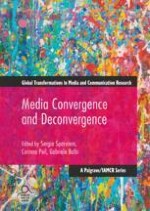2017 | OriginalPaper | Buchkapitel
6. Deconstructing Audiences in Converging Media Environments
verfasst von : Uwe Hasebrink, Sascha Hölig
Erschienen in: Media Convergence and Deconvergence
Aktivieren Sie unsere intelligente Suche, um passende Fachinhalte oder Patente zu finden.
Wählen Sie Textabschnitte aus um mit Künstlicher Intelligenz passenden Patente zu finden. powered by
Markieren Sie Textabschnitte, um KI-gestützt weitere passende Inhalte zu finden. powered by
